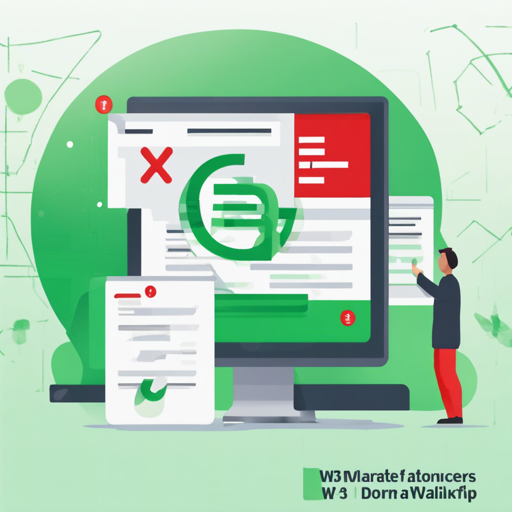Creating web documents using markup languages like HTML or XHTML is essential in the world of web development. However, ensuring that these documents are valid and conform to defined standards is just as important. W3C’s Markup Validator is a handy tool for checking the validity of your web documents. This guide will walk you through how to use this valuable service to validate your markup documents and troubleshoot any issues you may encounter.
What is W3C Markup Validator?
The W3C Markup Validator is a free service provided by the World Wide Web Consortium (W3C). It helps you check the validity of your web documents, ensuring they meet the standards defined by technical specifications. Validation is the process of checking your document against these specifications, which is crucial to maintaining the integrity and interoperability of your web content.
How to Use W3C Markup Validator
Using the W3C Markup Validator is straightforward! Here’s a step-by-step guide to get you started:
- Step 1: Visit the W3C Markup Validator website.
- Step 2: Enter the URL of the web document you want to validate in the designated input field.
- Step 3: Select the document type you are validating (HTML3, HTML4, XHTML, or HTML5).
- Step 4: Click the “Check” button to start the validation process.
- Step 5: Review the validation results, which will indicate any errors or warnings in your document.
Understanding the Validation Process with an Analogy
Imagine you are preparing a recipe for a dessert. The ingredients represent the markup tags in your document, while the steps in the recipe represent the structure and syntax of your markup language. Just as you must follow the recipe correctly to achieve the perfect dessert, the markup must adhere to specific rules to ensure your webpage functions correctly. Using the W3C Markup Validator is akin to having a master chef review your dessert before serving it – they check for errors in your technique or ingredient choices, ensuring that your final product meets all the culinary standards.
Troubleshooting Validation Issues
Even the best web developers can run into issues when validating their web documents. Here are some troubleshooting tips to help you resolve common problems:
- Check for typos in your markup tags, as even a small mistake can cause a validation error.
- Ensure your document is correctly structured; a missing closing tag or improperly nested elements can lead to issues.
- Remember that older HTML versions might not support newer tags or attributes; make sure you are validating against the correct document type.
- If you encounter persistent issues, you can consult the documentation provided by W3C or check the community forums for advice.
- For more insights, updates, or to collaborate on AI development projects, stay connected with fxis.ai.
Conclusion
In summary, validating your web documents is an essential part of ensuring their quality and compliance with industry standards. The W3C Markup Validator is an excellent tool that simplifies this process, enabling developers to produce more reliable and accessible web content. At fxis.ai, we believe that such advancements are crucial for the future of AI, as they enable more comprehensive and effective solutions. Our team is continually exploring new methodologies to push the envelope in artificial intelligence, ensuring that our clients benefit from the latest technological innovations.

